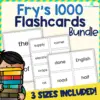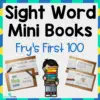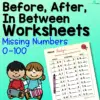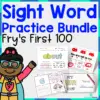The butterfly life cycle is an essential topic in preschools. Eric Carle’s The Very Hungry Caterpillar is the perfect resource that narrates the journey and transformation of a young caterpillar.
Explore the remarkable story with these ten unique activities that will capture every young one’s heart while learning various skills.
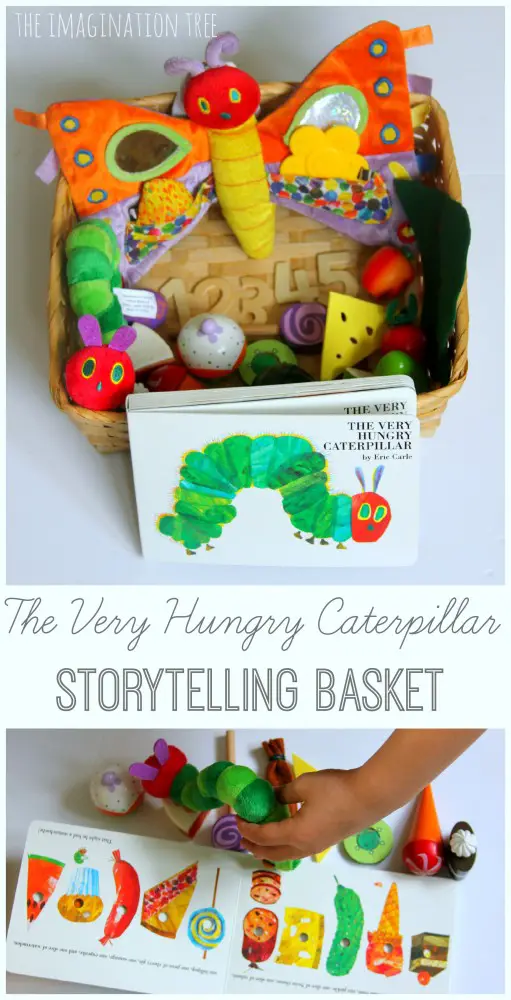
This basket is filled with different materials that are essential for retelling the story of The Very Hungry Caterpillar. It is perfect in centers and pretend play areas.
The use of these visually appealing props will help gain the audience’s interest and attention. It will also provide a great sensory experience for children. Naming the objects in the basket will help improve children’s vocabulary.
Ensure that the basket for this activity is clean and large enough to hold all the small toys in. Some toys included in this basket are stuffed toy caterpillar and butterfly, some plastic fruits, and food.
Cut out a leaf shape from a green felt cloth and add some holes.
Next, start reading the book. At the turn of each page, have the children lay out the toys mentioned in the story. Line up the food exactly as it is presented in the book.
Have the toy caterpillar munch on these delectables.
For this activity, you will need:
- Basket
- Wooden numerals
- Small toys based on The Very Hungry Caterpillar book
- The Very Hungry Caterpillar book
- Green felt
- Scissors
For more information on this activity, go to TheImaginationTree.com.
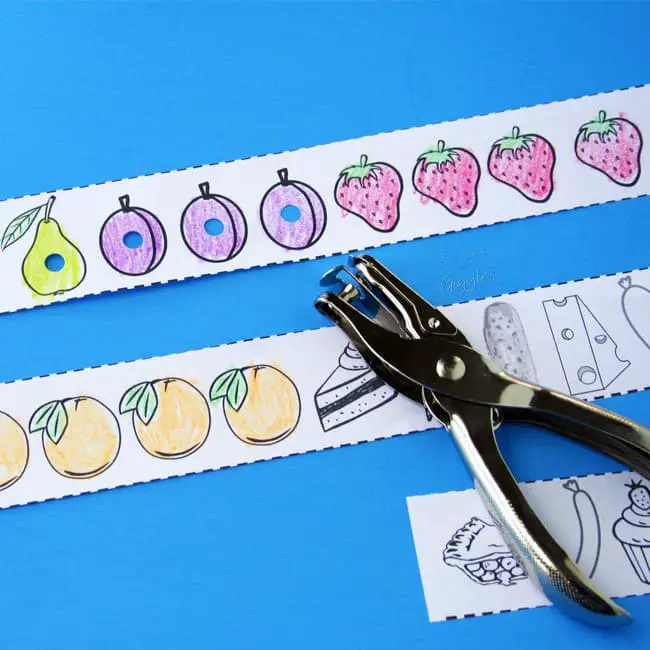
This fun activity requires children to make holes in each fruit and food, like in The Very Hungry Caterpillar. This great activity strengthens children’s hand muscles and develops hand-eye coordination skills.
Place these strips and hole punchers in centers or busy bags to keep children occupied. Working on this task will also help increase their focus and patience. Have the children work on this while retelling the story to help improve their comprehension.
Download and print the free hole-punching strips from the site. Each page comes with two sets of food strips. Provide one set for each child. Have the children cut the strips and color the pictures to resemble the illustrations in the book.
Let them use the hole puncher to make holes in each fruit and food. Some children may find this activity challenging. Provide the necessary assistance, such as holding the strips while punching or pressing the hole puncher.
For this activity, you will need:
- Printed hole-punching strips
- Hole puncher
- Crayons
- Scissors
For more information on this activity, go to BooksAndGiggles.com.
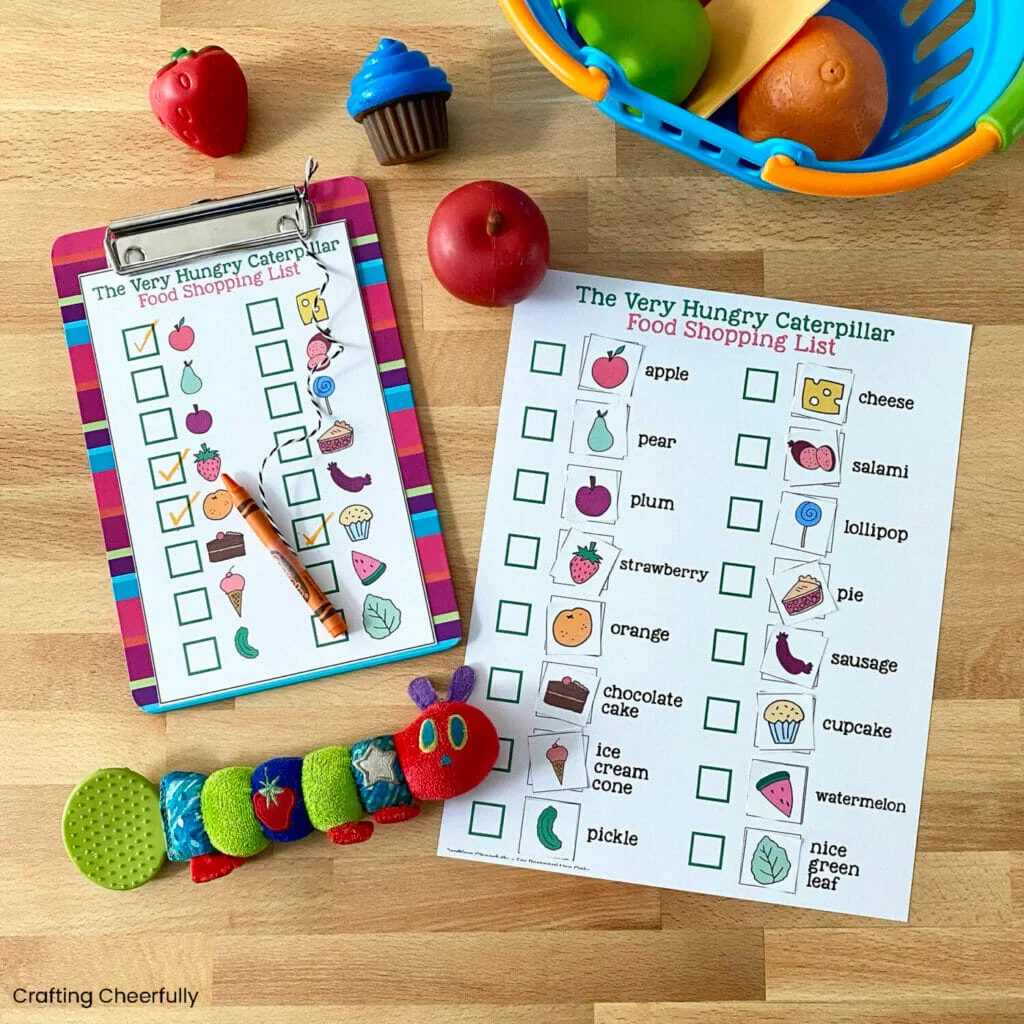
The use of black beans as fillers for this activity provides an amazing pop-up of colors once the toys are placed inside the bin. This activity provides a wonderful sensory experience and will help improve children’s tactile awareness.
Naming the objects based on The Very Hungry Caterpillar story in the bin and identifying their colors will help increase children’s vocabulary and color recognition skills.
Use a large bin and ensure that it is clean. Fill this with black beans and hide the toy food, plastic fruits, and the toy caterpillar under the beans.
Print out the free large-size shopping list from the site. Attach this on a clipboard. Tie a string around a crayon and secure it with sticky tape. Tie the end on the clipboard.
Have the children find the buried objects in the bin. Let them put a check on every item they find. They can also count the objects they find.
For this activity, you will need:
- Large bin
- Toy food
- Plastic fruits
- Black beans
- The Very Hungry Caterpillar toy
- Printed shopping list
- Clipboard
- Crayon
- String
- Sticky tape
For more information on this activity, go to CraftingCheerfully.com.
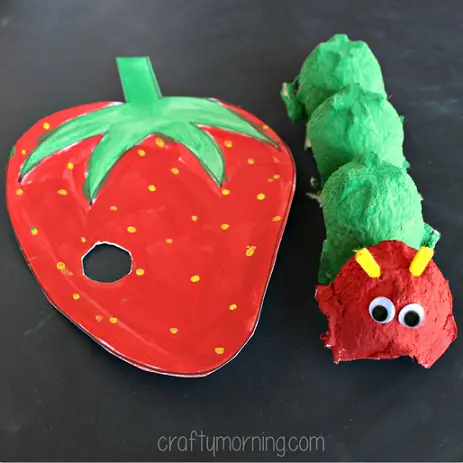
The cute caterpillar egg craft can be used for retelling the story of The Very Hungry Caterpillar. Use this in centers or as a stick puppet for a mini-stage play. Making this craft will help improve children’s fine motor skills.
Cut out a row of four cups from the whole egg carton. Let the children paint three of the four cups green and the last red. Once the paint dries, poke two holes in the red cup and insert a small pipe cleaner for its antennae. Attach the googly eyes.
Next, draw a strawberry on white paper. The site suggests printing this out as an option. Let the children paint the fleshy part red and green for the leaves and stem. Once dry, have them cut this out and add dots using yellow paint.
Let the children cut out a big hole in the strawberry. Assist the children with this step, if necessary.
For this activity, you will need:
- Egg carton
- Paint
- Paintbrush
- Scissors
- Glue
- Black marker
- Pipe cleaner
- Googly eyes
- Paper
For more information on this activity, go to CraftyMorning.com.
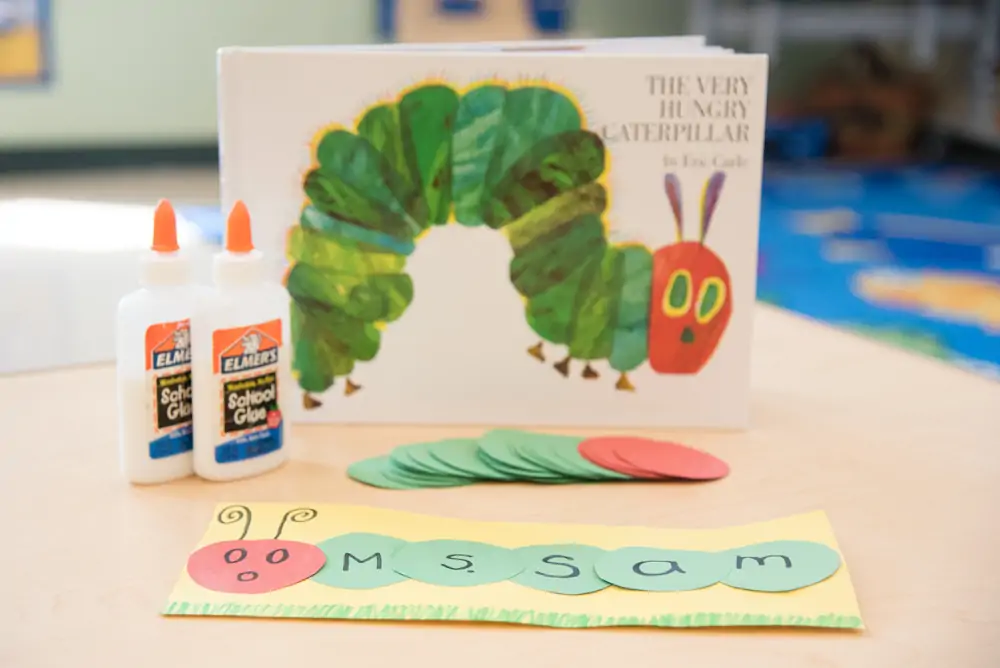
The Very Hungry Caterpillar-themed writing activity is an excellent practice for children learning to write the letters of the alphabet. They can practice writing uppercase and lowercase letters.
Children can also practice writing different words, such as their names, sight, decodable, colors, numbers, and shape words. This task is perfect for tabletop activities and for writing and literacy centers.
Have the children trace a red circle for the head and a green for each letter of the child’s name. Let them cut these out. Next, cut a yellow construction paper lengthwise.
Let them stick the red circle first, followed by several green circles on the yellow paper. Let them use the black marker to add facial details on the red circle and write the letters of their name in the green circles.
Have them use the green marker to draw fine lines at the bottom part of the yellow paper to resemble the grass.
For this activity, you will need:
- The Very Hungry Caterpillar book
- Markers
- Glue
- Construction papers
- Scissors
For more information on this activity, go to KiddieAcademy.com.
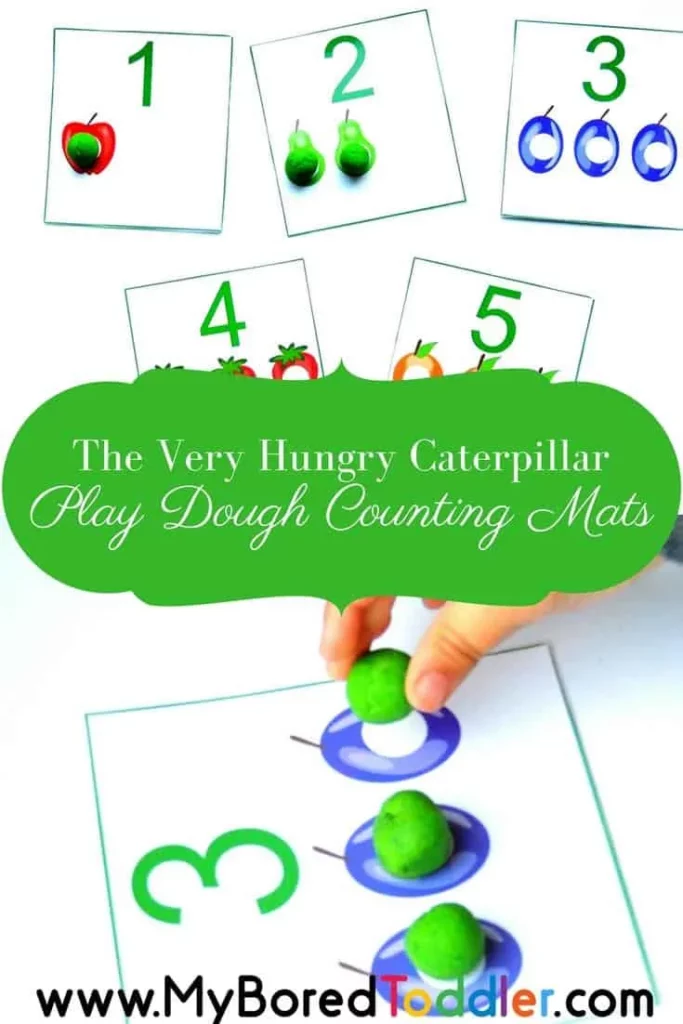
Paired with the book The Very Hungry Caterpillar, this activity will help children learn various math concepts. They will learn to recognize numbers, count, and arrange them in order.
Working with playdough will strengthen their hand muscles and provide a great sensory experience.
The set counting mats can be downloaded for free from the site. Print, cut, and laminate these for durability. Each set has five mats to represent the numbers one to five.
Provide playdough for each child. Have them roll a small chunk between their palms to make balls. Let them place the balls in the center of each of the fruits. Allow them to count as they put each playdough ball on the mat.
Buttons and pompoms can be used for this activity instead of playdough. The site suggests using dot markers to unlaminated counting mats as a variation.
The children can arrange the number cards in ascending or descending order to teach number order.
For this activity, you will need:
- Printed counting mats
- Playdough
- Buttons
- Pompoms
For more information on this activity, go to MyBoredToddler.com.
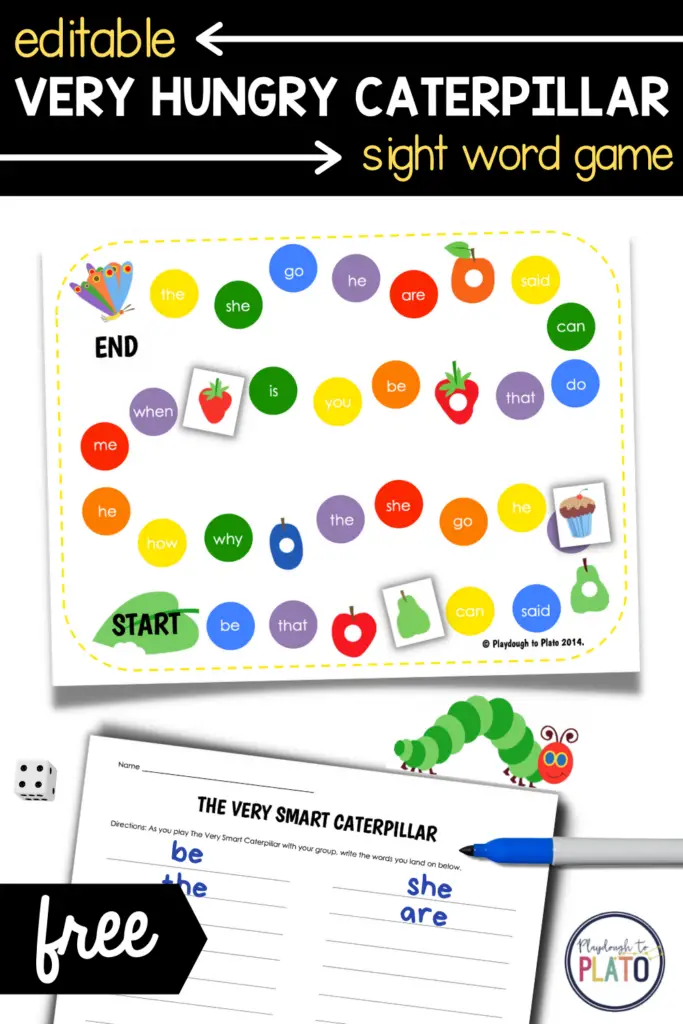
Children who are learning how to read will encounter sight words. These words commonly appear in sentences, which children will need to recognize.
A terrific way to practice reading these words is through his The Very Hungry Caterpillar-themed game.
This game is a lovely addition to literacy centers. Children can improve their word recognition and spelling skills. Turn-taking in the game will teach them patience and to follow the rules. These are essential social-emotional skills.
Download and print the free game board from the site. Cut out the pieces and laminate these for durability. Next, use the clip binder to attach each piece.
Squeeze the tabs as shown on the picture on the site to remove them and make the pictures stand. These will become the place markers of each player.
Next, explain the rules of the game. Let them read the word on the spot where their place markers landed. Repeat until they reach the end.
For this activity, you will need:
- Printed game board
- Binder clips
- Scissors
- A die
For more information on this activity, go to PlaydoughToPlato.com.

Retell the story of The Very Hungry Caterpillar with this adorable printable to help children recall the order of events in the story and improve their comprehension and oral language skills.
Assembling the pieces for this activity will help improve their fine motor skills. Attaching the clothespins to the craft stick will help strengthen their three-finger grasp.
This is an excellent activity for insect-themed centers and busy bags.
Download and print the free sequencing printable from the site. Cut these out and laminate them. Next, have the children glue each round piece on the clothespins.
Let them turn the paint stick into green using paint. Once the paint dries, allow them to attach the head cutout on one end.
Next, read the story to the children. Ask them to arrange the circles in order based on the book. Let them attach each clothespin to the caterpillar paint stick.
Use questions such as “What happened first?” or “What happened next?”
For this activity, you will need:
- The Very Hungry Caterpillar printable
- Scissors
- Paint stick
- Wooden clothespins
- Glue
- Paintbrush
- Paint
- The Very Hungry Caterpillar book
For more information on this activity, go to SchoolTimeSnippets.com.
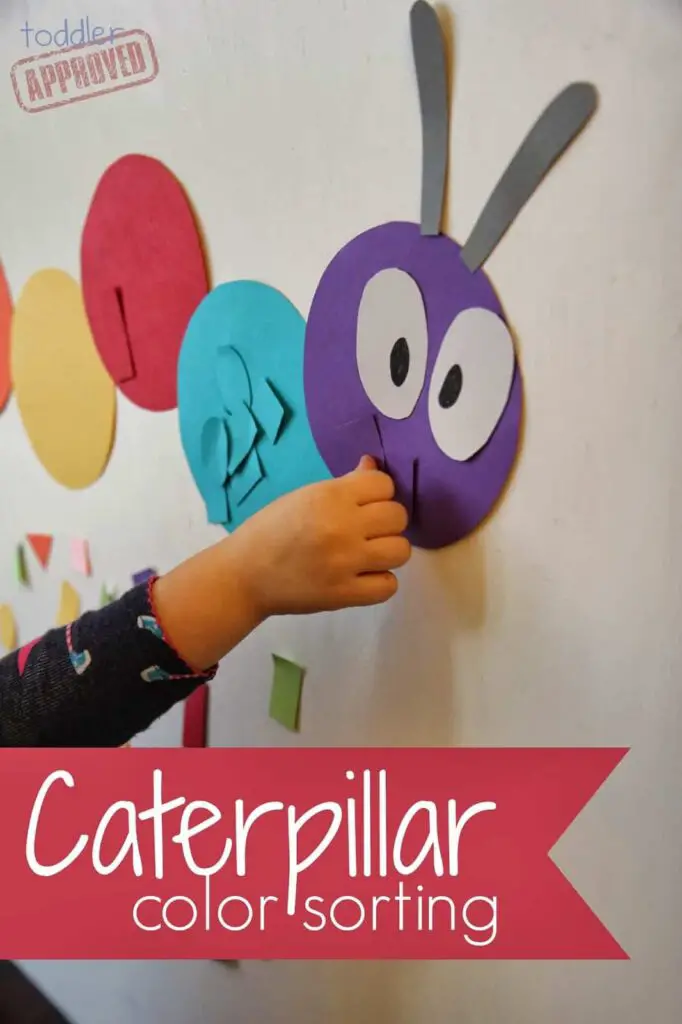
The book The Very Hungry Caterpillar is filled with colorful illustrations. Use this idea to teach children to color recognition skills through this sorting activity. They will learn to find the matching colors of the cutout papers and improve their scanning ability.
Peeling off and sticking the small pieces on their corresponding colors will allow children to strengthen their three-finger grasp. This activity will also help improve their shape-recognition skills.
Have the children trace and cut out circles using a large round object on the colored cardstock. Stick them on a wall to form a caterpillar. Turn the last circle into the caterpillar’s head by adding eyes and antennae using markers and scrap paper.
Use the rest of the scrap paper to cut out different shapes. Attach these on the wall below the caterpillar using painter’s tape.
Have the children take one of these shapes and find its matching color on the caterpillar’s body.
For this activity, you will need:
- Colored cardstock
- Scissors
- Painter’s tape
- Markers
- Round object for tracing
For more information on this activity, go to ToddlerApproved.com.
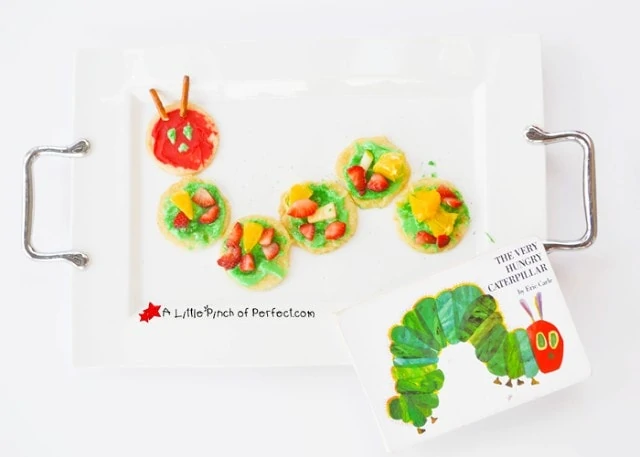
An edible treat inspired by The Very Hungry Caterpillar is a delightful hit among young children. This multi-sensory activity stimulates children’s different senses while helping them learn practical life skills through food preparation.
Preparing these snacks will teach children independence and creativity and improve their fine motor skills.
The site suggests using homemade or store-bought cookie dough for this activity. Have the children roll out the dough. Let the children use a six-inch round cookie cutter to make six round-shaped sugar cookies.
Carefully lay these on a baking tray with enough space apart and bake in the oven. Next, provide the children with a plateful of cut-up pieces of different fruits.
Let the children spread the green frosting on the caterpillar’s body and use the fruits as toppings on the mini-pizza.
For the head, have them spread a red frosting. Shape some green frosting for the eyes and mouth. Use the pretzel sticks for the antennae.
For this activity, you will need:
- Sugar cookie dough
- Cut up pieces of fruits
- Pretzel sticks
- Green and red frosting
- Spatula
For more information on this activity, go to ALittlePInchOfPerfect.com.
Conclusion
These The Very Hungry Caterpillar-inspired activities are a fantastic way to extend lessons based on the book while allowing children to appreciate the story and learn different concepts.
Working on these activities will encourage children to build essential preschool skills. Thank you for reading. Come back and check out our other activity articles soon.
People Also Ask
Many picture books are designed to teach young learners the butterfly life cycle. One of the most popular is a beloved classic by Eric Carle. The Very Hungry Caterpillar has set the standard for creative narration and impeccable illustration.
It has entertained and taught countless children different concepts for over fifty years.
The story centers around the life cycle of the butterfly and its transformation. However, other concepts are crucial for children to learn through this book.
Children can learn about food names. They can learn how to count and name the days of the week. They can learn about colors and the collage art technique used for the illustrations.


